What is pickleball and how do you play it? Rules and regulations of the game
Other Sports
All around the world, basketball arenas set the stage for an electrifying game of hoops among friends and local or international teams. Every playing arena is specially designed to regulate the game with lines and markings guiding positioning. Dig in to learn more about the labelled basketball court diagram.
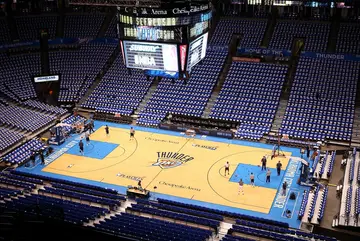
Would you like to find out what the parts of a basketball court are called? Dimensions and markings allow for the accurate placement of players. This article will give a detailed description of a labelled basketball court.
Amateur arenas vary in size across the board. However, professional WNBA and NBA standards require measurements of 94 feet x 50 feet (28.65 metres x 15.24 metres).
Any labelled basketball court diagram typically indicates features such as a basket, backboard, restricted area, center circle, three-point, mid, base, side, and free-throw line. In addition, indoor and outdoor floor material is an essential feature specified by the basketball associations.
What is pickleball and how do you play it? Rules and regulations of the game
Other Sports
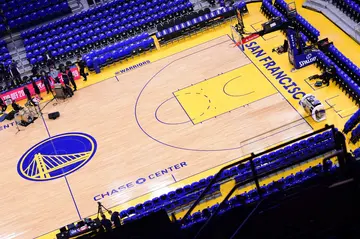
Markings extend from different ends, separating various parts of the court, such as the midline that marks the centre. Additionally, the markings inform players on the role of various areas, such as the free-throw markers or the three-point mark that indicate the locations where players can score.
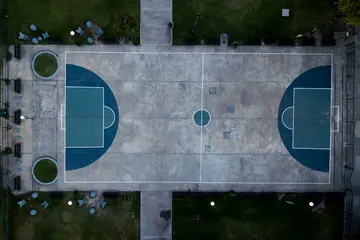
The hash mark is a short marking created 3 feet from the free-throw lane and extended 6 inches onto the court. It determines ball placement and aligns players during a free throw.
There are various lines created to mark the arena and create boundaries. Boundary lines include the base (endline) and sidelines. Others denote areas such as the free-throw circle, centre circle, midcourt, free-throw, and three-point regions.
What are the rules of curling? Understanding curling as a sport
Other Sports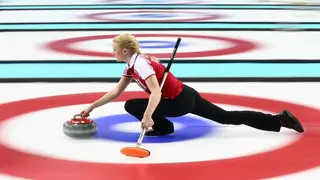
The standard NBA arena measures 94 feet long by 50 feet wide (28.6 m by 15.24 m). According to the NBA rulebook, rule number one specifies arena dimensions and equipment. Here is a summary of the official NBA basketball court dimensions and specifications.
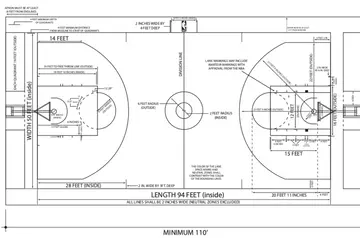
All-time best: Top 15 left-backs in the world in 2023 ranked
Football
Several similarities exist between a WNBA and an NBA arena, such as the dimensions. In both leagues, teams battle on a 28.65 by 15.24 meters wide court. Here are additional specifications according to the official WNBA 2022 rulebook.
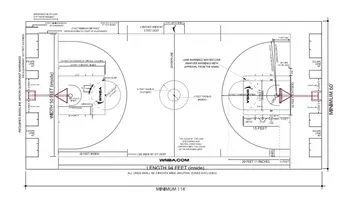
Indoor sports: A list of the best indoor sports and games in the world
Other Sports
What is the size of a FIBA basketball court? Compared to the NBA and WNBA, FIBA dimensions are slightly smaller, measuring 28 meters long by 15 meters wide with 1.5-meter boundaries. Other specifications are shown in the simple labelled FIBA basketball court diagram below.
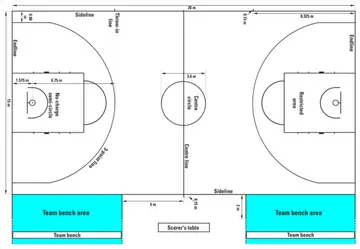
There are five positions in basketball, the centre, point guard, power forward, small forward, and shooting guard. According to the NBA, diagrams of a basketball court with positions should show the positions in specific areas of the playing arena.
Centres | Play near the basket |
Power forwards | Play near the basket |
Roam all around the court | |
Point guards | Control the backcourt |
Shooting guards | Move around the court, freeing themselves for scoring opportunities |
Basketball arena dimensions, hoop height, and markings allow players and coaches to design and carry out plays. Although labelled basketball court diagrams show slight differences, the principles, such as the players' positions and scoring systems that guide the game, remain the same.
How does the NBA draft work? Understanding the rules of the NBA draft
NBA
READ ALSO: What does a power forward do? Explaining the role of a power forward in basketball
Sportsbrief recently published an article detailing the role of a power forward in basketball. In rebounding, shooting, offence, and defence, the job of a power forward is crucial for the successful execution of plays.
Click on the link above to understand what ultimate power forwards in the NBA and WNBA, such as Tim Duncan, Giannis Antetokounmpo, Nneka Ogwumike, and Tina Charles, do.